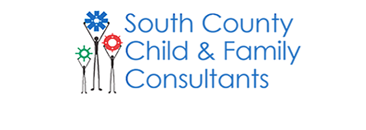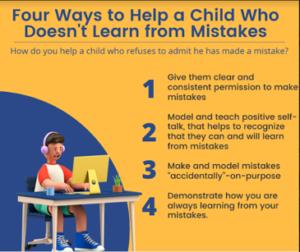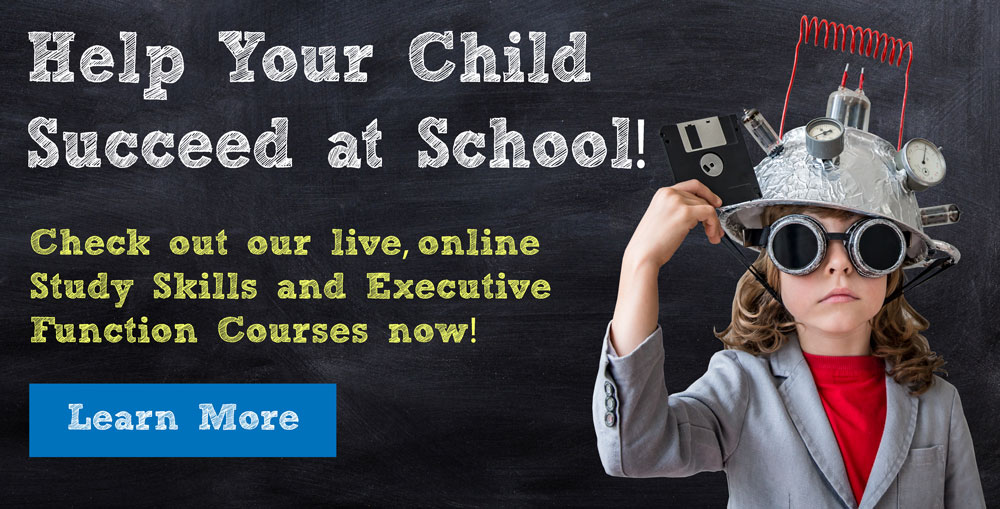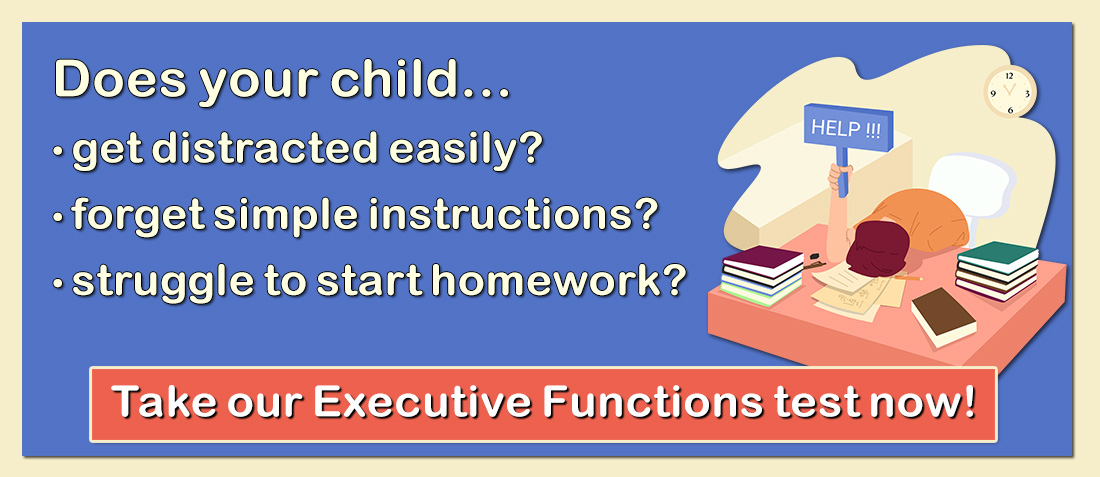Sometimes children have a hard time admitting that they have made a mistake, or they simply do not know how to learn from the mistakes they have made. In this case, it is important to help guide your child through the process of accepting that mistakes are okay, and teaching them how to learn from what happened. Sometimes all children need is a little encouragement and direction.
Some kids really struggle when they make mistakes, and one of the things that might be happening is they could be struggling with their use of executive functions, specifically flexibility. Flexibility and other executive functions is one of the things that we examine when we work with kids at South County Child and Family Consultants. At SCCFC we perform neuropsychological evaluations on children to better understand the way their brain works and why they are the way that they are. Its not uncommon to have problems with flexibility, as it is a common symptom of ADHD and it is even seen in children with Autism Spectrum Disorder. If you are interested in a neuropsychological evaluation with us to better learn about your child, please contact us below.
Here are four ways to help your child learn from their mistakes.
Step 1: Give them clear and consistent permission to make mistakes.
If children are not told that they are supposed to make mistakes and that it is natural, then they may not realize that making mistakes is okay. Children that want to avoid getting into trouble can fear mistakes to avoid any consequences, so they may not understand that they will not always get punished for making mistakes. This is why it is important to make it clear to children that mistakes are okay, that they are allowed, and that they are not bad things.
Step 2: Model and teach positive self-talk, that helps to recognize that they can and will learn from mistakes.
It is important that your child is hearing your encouragement and reassurance that mistakes are okay to be made directly after they make them. Hearing reassurance directly after the mistake is what is going to help them to make that connection and understanding that mistakes are okay and something they do not have to be scared about avoiding. At the same time it is also important to show them how they can learn from those mistakes so they can see how it can better them rather than just being told generally that they can learn from them.
Step 3: Make and model mistakes “accidentally”-on-purpose.
Children, especially young children, learn by modeling. This means that they learn their behaviors by watching those around them, especially their parents and teachers. To really show children that it is okay to make mistakes, it would be just as important to show them that you make mistakes as well. Through this process of modeling, you can show the child an appropriate reaction to making a mistake and to introduce the idea that they can learn from their mistakes.
For example, a parent modeling the mistake of accidentally drawing on the table can follow up their mistake by saying, “That’s okay, we can always wash the marker off the table. Now I have learned that if I don’t control where I am coloring I might accidentally color on the table, so I should be more careful and control where I am coloring on the page.” This intentional mistake is going to help the child see the correct response and reaction to a mistake, and see how someone can learn from the mistake they have made.
Step 4: Demonstrate how you are always learning from your mistakes.
Finally, it is important to show children that learning from mistakes is not specific to the ones you outline to them. It is key to make sure that children understand that this is a concept that is more than just a spilled glass of water or paint on the table, it can be applied to every mistake we make, big or small.
If you are interested in printing this page to use as a resource, click “download this as a pdf” on the top of this page. To print the image, click on the image.
Here at South County Child and Family Consultants, we work with children who experience difficulties with executive functioning. One of the most common executive functioning difficulties is flexibility, which may result in struggles with learning from making mistakes. In our office, we provide comprehensive neuropsychological evaluations of children, teens, and college students. But beyond the confines of the office, we are well informed of the latest research and technologies that can help kids with social-emotional, attention, and learning problems. Check out our other posts to learn more about the latest innovations to help these kids.
Receive online class information and helpful tips from Dr. Randy Kulman's LearningWorks for Kids |





